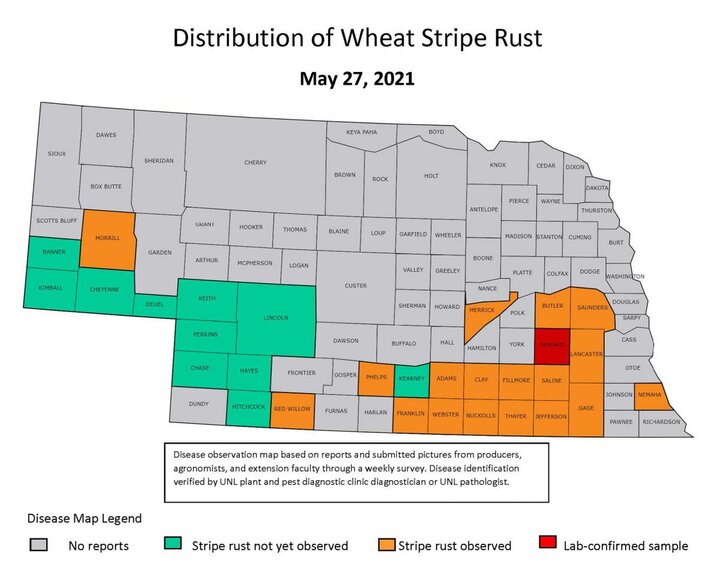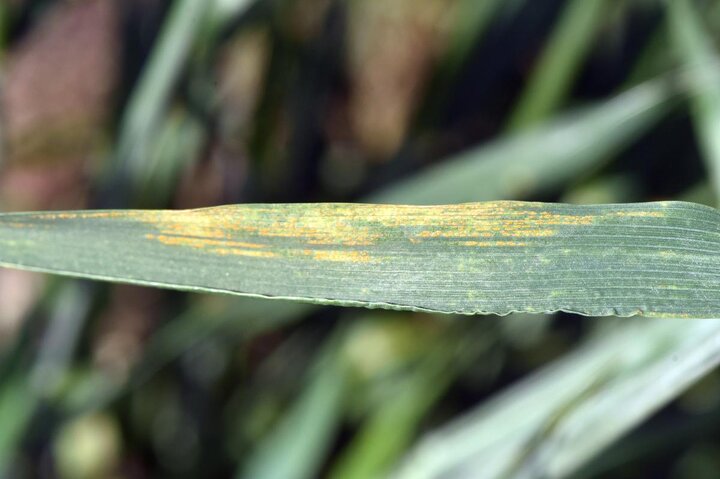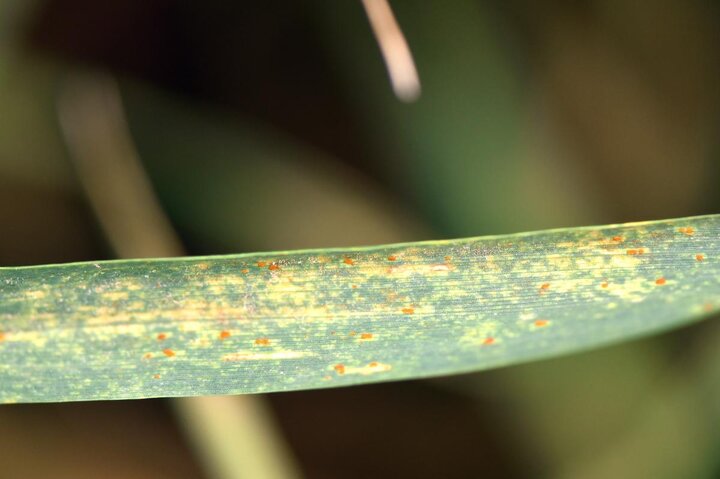This week’s wheat disease surveys focused on Lancaster and Saunders counties in southeast Nebraska, Lincoln and Keith counties in the west-central part of the state, and Deuel, Kimball, Banner, Morrill and Cheyenne counties in the southern Panhandle. Growth stage ranged from flag leaf emerging or about to emerge in Kimball and Banner counties to flag leaf emerged in Deuel, Cheyenne and Morrill counties. In the west-central and southeast, growth stage ranged from boot to heads emerged.
All fields visited were in good to excellent condition and had only trace to low levels of disease. Recent heavy rainfall in parts of west central Nebraska and the southern Panhandle left some fields partially flooded (Figure 1).


The current stripe rust and leaf rust distribution maps are shown in Figures 2 and 3. Stripe rust (Figure 4) was confirmed in Saunders County and reported in Nemaha and Morrill counties. Leaf rust (Figure 5) was confirmed in Lancaster County, reported in Nemaha County, and confirmed by lab tests in Seward County. In the west-central and southern Panhandle, trace to low levels of fungal leaf spots (Figure 6), wheat streak mosaic and barley yellow dwarf were observed. In Saunders County, bacterial streak (Figure 7) was just starting to develop in wheat plots at the Eastern Nebraska Research and Extension Center (ENREC).


The Risk of Fusarium Head Blight Has Increased
As of May 27, the Fusarium Risk Tool was showing a moderate to high risk of Fusarium head blight (scab) in much of the southeastern, south-central and southwestern parts of Nebraska, which are the scab-prone regions in the state.


Management
In regions or areas that have received moderate to heavy rainfall during the last two weeks, it is recommended that a fungicide with good efficacy on scab be applied at early flowering. Fungicides with good efficacy on scab are Prosaro, Caramba, Miravis Ace and Proline. The window for fungicide application to control scab can be extended by up to about a week past the early flowering growth stage.
The fungicides with good efficacy on scab will also effectively control stripe rust, leaf rust and fungal leaf spot diseases. Where stripe rust has been confirmed and the wheat crop is not headed, a fungicide application to protect the flag leaf from stripe rust, leaf rust and fungal leaf spots is recommended. Read and follow label instructions before and when applying any fungicide. Diseases caused by bacteria and viruses cannot be controlled once they occur.

